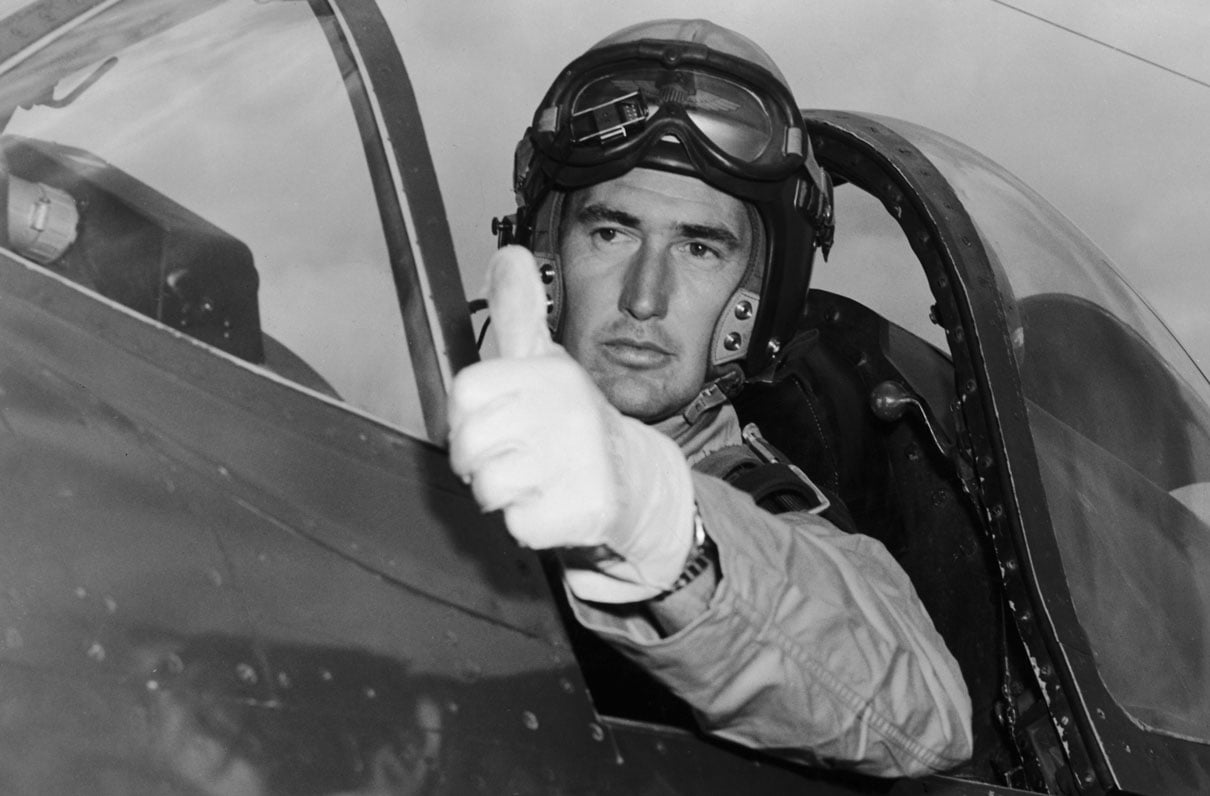Nearly six decades after he retired from the game, Boston Red Sox legend Ted Williams remains one of the most accomplished and revered players in baseball history. The last player to hit .400 through an entire season - a feat he accomplished in 1941 - Williams had a lifetime batting average of .344 and 521 home runs. He was elected to the Baseball Hall of Fame in 1966, with 93 percent of the vote.
Williams' stats almost certainly would be much higher had he not left baseball to serve his country - twice. Commissioned a second lieutenant in the Marine Corps, he trained as a naval aviator during World War II but saw no combat. Seven years later, reservist Williams was called up again to serve in the Korean War as a fighter-bomber pilot with the 1st Marine Air Wing.
It was in Korea where Williams met John Glenn, the future astronaut and U.S. senator. They quickly became good friends, and Williams flew half his missions as Glenn's wingman.
“I had been a baseball fan since I was a boy, and meeting Ted was a thrill,” Glenn recalled in his autobiography, John Glenn: A Memoir. “He was tall, genial, and easy to like, and he developed a voracious taste for the chocolate fudge [my wife's] sister, Jane, would send from home. … He was a fine pilot, and I liked to fly with him.”
Vet gave me this: John Glenn & Ted Williams who left @RedSox 2x to serve in WWII & Korea. He was at the height of his career during WWII. pic.twitter.com/KWH8vkB2lw
- Francisco Urena �������� (@Urena) November 12, 2016
Williams flew 39 combat missions in Korea and experienced his share of harrowing moments.
“Ted got hit on one of his first missions,” Glenn noted in his memoir. “He was streaming smoke and fire from around the engine, which in a Panther usually signaled an explosion that would blow the tail off.”
Williams' radio was out, so the other pilots flew close and signaled for him to eject. But Williams decided to attempt a return to Seoul instead. It was a shaky trip, made all the more so because Williams' plane had no landing flaps, and its landing gear wouldn't come down.
“He bellied in at 150 miles an hour or more, slid up the runway for two thousand feet, came to a stop, jumped out of the cockpit and off the wing, and ran until he was out of danger,” Glenn wrote. “Then he turned around and stood there watching the plane burn on the runway.”
Williams received a hero's welcome when he returned to baseball at the end of the 1953 season, but he refused the title.
“I was no hero,” he once told reporters, according to a report on MLB.com. “There were maybe 75 pilots in our two squadrons and 99 percent of them did a better job than I did. But I liked flying. It was the second-best thing that ever happened to me. If I hadn't had baseball to come back home to, I might have gone on as a Marine pilot.”
In a column Williams wrote for The Boston Globe in1962, following Glenn's historic orbit around the Earth aboard Friendship 7, he said: “[Glenn] was a man destined for something great; it was an intuitive feeling I had. John always had exceptional self-control and was one of the calmest men I have ever met, no matter how perilous the situation.”
The respect was mutual. Upon hearing that the only thing Williams wanted out of life was to walk down the street and hear people say, “There goes the greatest hitter who ever lived,” Glenn wrote. “In my book, he made that hands down. And there was certainly nothing 'bush' about him as a Marine combat pilot; he gave flying the same perfectionist's attention he gave to his hitting.”
